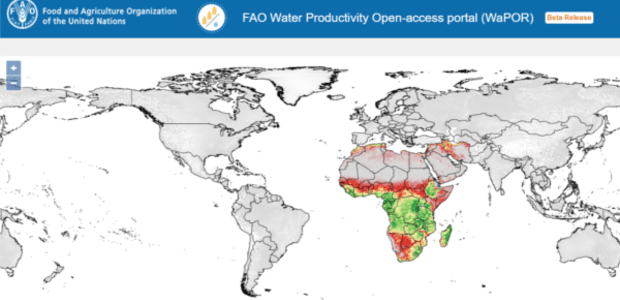advertisement
Kenya, Uganda to benefit from FAO’s new high-tech tool for tracking water productivity
“Water use continues to surge at the same time that climate change – with increasing droughts and extreme weather –…

“Water use continues to surge at the same time that climate change – with increasing droughts and extreme weather – is altering and reducing water availability for agriculture,” Maria Helena Semedo, FAO’s Deputy Director-General, Climate Change and Natural Resources said in a press release. “That puts a premium on making every drop count, underscoring the importance of meeting growing food production needs from efficiency gains.”
Per FAO, the WaPOR open-access database has gone live, tapping satellite data to help farmers achieve more reliable agricultural yields and allowing for the optimization of irrigation systems. WaPOR was presented during a high-level partners meeting for FAO’s Coping with water scarcity in agriculture: a global framework for action in a changing climate. It allows for fine-grained analysis of water utilised through farming systems, generating empirical evidence about how it can be most productively used.
How it works
advertisement
FAO says that the program uses a pixel-based methodology to produce comprehensive maps allowing for better use of natural resources. When coupled with real-time data, agricultural extension agents can help farmers obtain more reliable crop yields, both improving their livelihoods and making them more sustainable.
“Supporting smallholder farmers with access to geospatial information that can optimize water availability and curb their vulnerability to climate change is a key mission for FAO and this is an important first step,” said FAO Assistant Director-General René Castro, head of the Climate, Biodiversity, Land and Water Department, in a press statement.
Other countries set to benefit from the WaPOR include: Benin, Burundi, Egypt, Ethiopia, Ghana, Jordan, Kenya, Lebanon, Mali, Morocco, Mozambique, Rwanda, South Sudan, Syria, Tunisia, Uganda, West Bank and Gaza Strip, and Yemen.